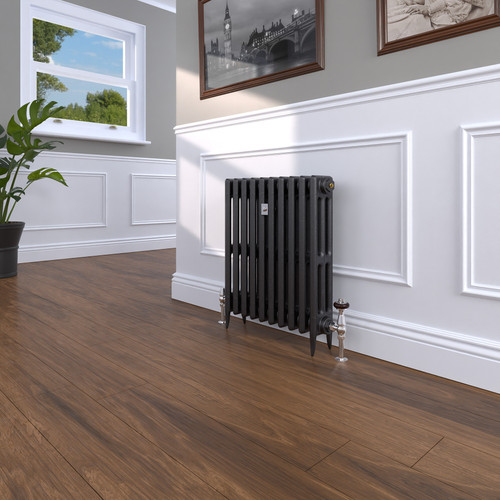How Do You Bleed A Radiator?
Posted by Radiators 4u on 1st Feb 2023

If the thought of bleeding a radiator leaves you feeling a little squeamish, don't worry, it needn't be a messy job. Bleeding a radiator is a simple DIY task that releases air trapped in your heating system. The practice of bleeding your radiators ensures your heating system works at maximum efficiency, warming your rooms effectively, and potentially reducing your energy bills.

Why do you need to bleed your radiators?
There are several reasons why you might need to bleed your radiators. These include:
- The top of your radiator feels cold: This is one of the most common reasons for bleeding a radiator. Trapped air prevents hot water from circulating properly around your radiator, resulting in cold spots. When this happens, you need to bleed your radiator to maintain consistent heat. If your entire radiator feels cold, it may be a sign of a bigger problem with your radiator pipes. If bleeding your radiators doesn't resolve the situation, you may need to seek expert help.
- Your radiators are making a funny noise: If your radiators are rattling, thumping, or gurgling, it's probably because air is trapped in the system. Bleeding your radiators will restore your heating system to its usual quiet efficiency.
- Mould or damp patches: Poorly heated rooms are susceptible to mould and dampness. If you notice new patches of damp or mould, particularly in less frequently used rooms, it may be because your radiators are not operating as efficiently as they should be. Therefore, bleeding your radiators may help prevent further incidents of mould or damp.

How often should you bleed your radiators?
To ensure your radiators heat your room to maximum efficiency, you should regularly check your radiators for problems that may be resolved by bleeding. In addition, it's always a good idea to check your radiators before periods of cold weather to ensure your heating system works efficiently and effectively when it is most needed.

What tools do you need to bleed a radiator?
Bleeding a radiator isn’t a big job and only requires a few tools. Here’s what you’ll need:
- A radiator valve key: A small and inexpensive tool enabling you to open and close the top valve on a radiator easily.
- A small bucket: To catch any drips or escaping water. We are not usually talking torrents of water here. A mug, jug, Tupperware tub or pan will suffice.
- A cloth: To help turn the radiator key if the valve is stiff and clean up any drips or spills.
- Gloves: Safety first - your radiators and any escaping air or water may be very hot. A thin pair of gloves will protect you from getting burned.
How to bleed radiators without a key
- If you don't have a radiator key, you may be able to use a flat-headed screwdriver on more modern radiators with a slotted head bleed valve.
A step-by-step guide to bleeding your radiator






Look after your radiators, and they'll look after you
A central heating system comprising of high-quality radiators will potentially heat your home for many decades to come. Simple maintenance jobs, like bleeding your radiators, will ensure they continue to work as efficiently as they day you first installed them
Alongside a complete range of radiators, in a variety of styles, finishes and materials, Radiators 4u also stock a wide selection of accessories to guarantee your radiators perform as well as they look. For more information, check out our website, or for more advice regarding radiator maintenance, contact our in-house team of experts here.
Customer Favourites:










